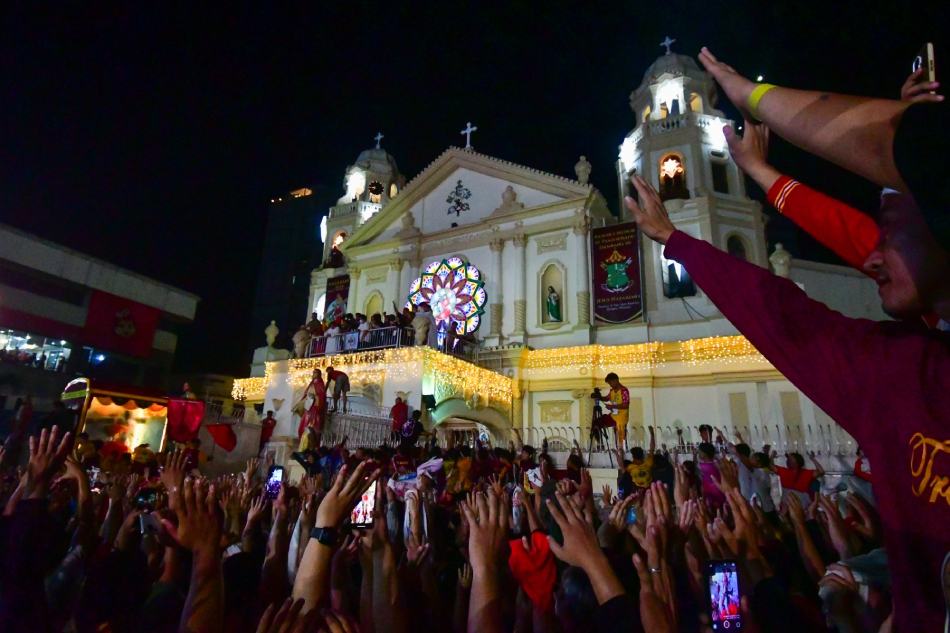Black Nazarene returns to Quiapo Church after almost 15 hours | ABS-CBN

Welcome, Kapamilya! We use cookies to improve your browsing experience. Continuing to use this site means you agree to our use of cookies. Tell me more!
Black Nazarene returns to Quiapo Church after almost 15 hours
Black Nazarene returns to Quiapo Church after almost 15 hours
ABS-CBN News
Published Jan 09, 2024 08:34 PM PHT
|
Updated Jan 09, 2024 08:47 PM PHT
The image of the Black Nazarene has returned to the Quiapo Church after nearly 15 hours.
The image of the Black Nazarene has returned to the Quiapo Church after nearly 15 hours.
The image of the Black Nazarene crossed the threshold of the church around 7:45 p.m.
The image of the Black Nazarene crossed the threshold of the church around 7:45 p.m.
Authorities said over 6.5 million people attended the procession, which started at around 5 a.m. from Quirino Grandstand.
Authorities said over 6.5 million people attended the procession, which started at around 5 a.m. from Quirino Grandstand.
The crowd at the Quiapo Church was also estimated at 1,398,500 as of 6 p.m. Tuesday.
The crowd at the Quiapo Church was also estimated at 1,398,500 as of 6 p.m. Tuesday.
ADVERTISEMENT
The Philippine National Police earlier said this year’s Traslacion was "generally peaceful" and "better coordinated" than in previous years.
The Philippine National Police earlier said this year’s Traslacion was "generally peaceful" and "better coordinated" than in previous years.
It is the first time the traditional parade featuring the life-sized statue has been held since 2020, after the COVID-19 pandemic forced officials to drastically downsize the event.
It is the first time the traditional parade featuring the life-sized statue has been held since 2020, after the COVID-19 pandemic forced officials to drastically downsize the event.
The original wooden statue was brought to the Philippines in the early 1600s when the nation was a Spanish colony.
The original wooden statue was brought to the Philippines in the early 1600s when the nation was a Spanish colony.
Many Filipinos believe it got its dark color after surviving a fire aboard a ship en route from Mexico.
Many Filipinos believe it got its dark color after surviving a fire aboard a ship en route from Mexico.
— With a report from Agence France-Presse
ADVERTISEMENT
ADVERTISEMENT


